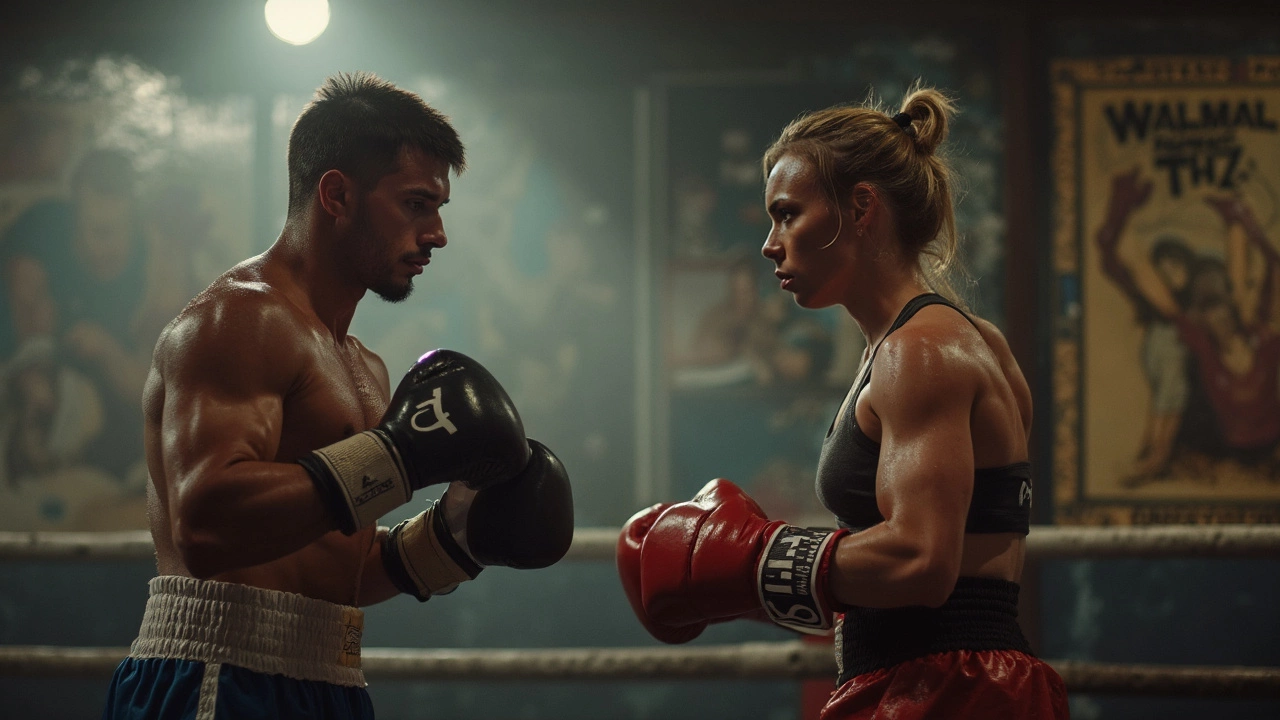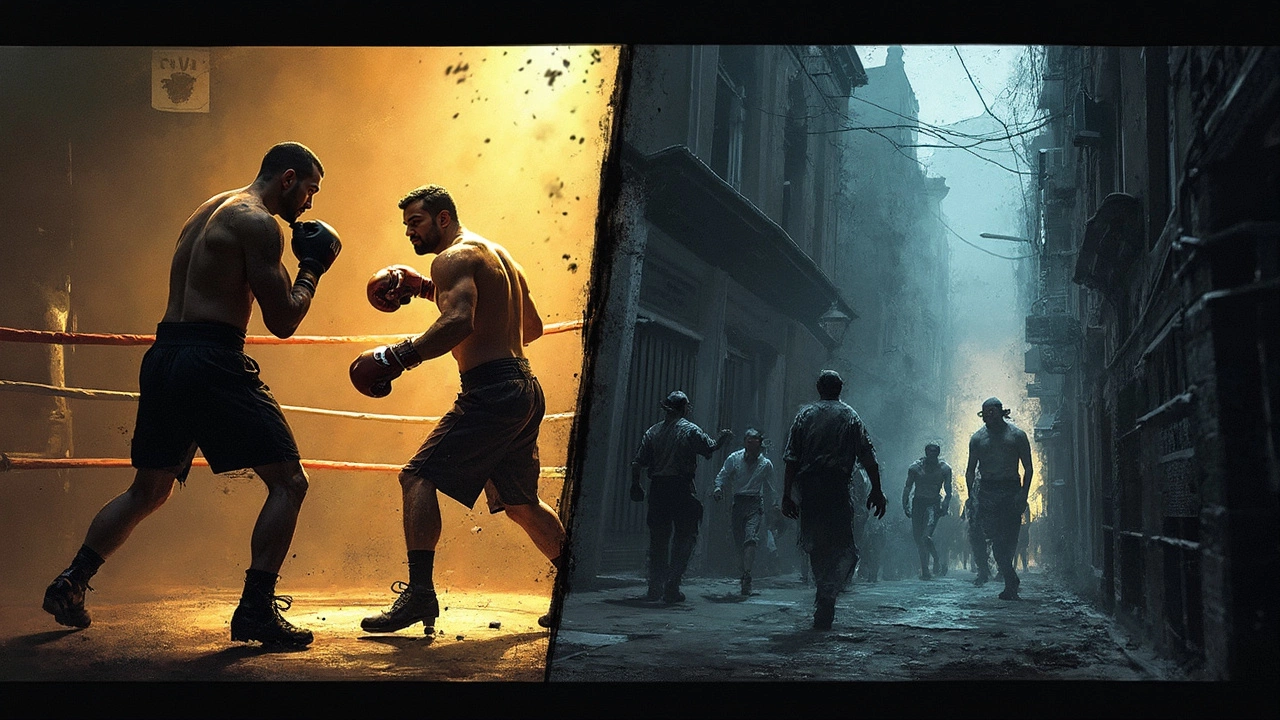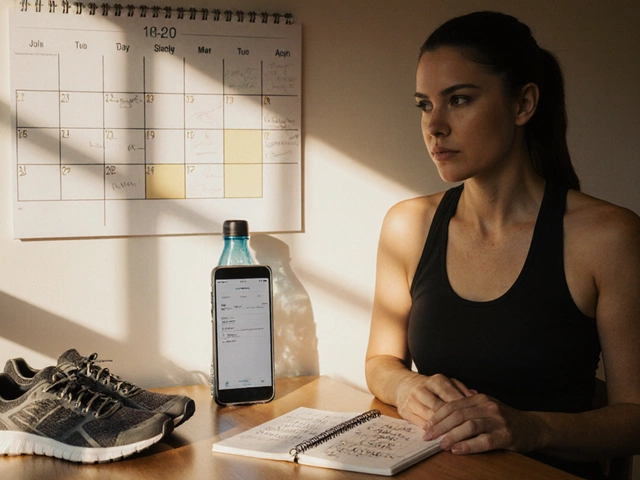
Boxing Matches June 17, 2025
Is Boxing Different Than Fighting? The Real Gap Explained
Walk into any gym and you'll hear people argue about whether boxing is just fighting with gloves. Makes it sound simple, right? But there's a huge split between stepping into a boxing ring and getting into a random scrap. Boxing is built on rules, structure, and years of technique. Fights outside the ring are unpredictable—no ref, no time limit, no legal punches only.
Ever watched a bar fight video and thought, 'A boxer would destroy those guys'? Maybe, maybe not. Boxing teaches you how to punch, move, defend, and keep your cool when adrenaline kicks in. But street fights? They’re pure chaos. You never see someone shadowboxing in the parking lot before throwing down. Usually it’s wild swings, grappling, maybe even someone grabbing a chair. Totally different world from a sanctioned match.
- The Rules That Change Everything
- How Training Shapes a Boxer
- Real-World Fights: Fact vs. Movies
- Why Context Matters in Every Clash
The Rules That Change Everything
This is where boxing pulls way ahead of a basic fight: the rules. Step into a boxing ring, and every move is watched. You can’t just hit anywhere you want—think about it, no punches to the back of the head, neck, or below the belt. The moment you break those, the ref jumps in. Try that outside the ring and nobody’s stopping anything.
Here’s how it breaks down:
- Boxing has timed rounds—usually three minutes each with a minute for rest. Street fights? They go until someone quits or gets broken up.
- You only hit with your fists in boxing. There’s no kicking, biting, or elbows.
- Gloves aren’t just for safety. They change how you punch, slow your hands a little, and protect your wrist and knuckles. In a real fight, it’s bare knuckles and busted hands are common.
- Boxers fight people their own size. In a street fight, you’ve got no say—could be anyone from a scrawny teenager to a 300-pound biker.
If you’re wondering why these rules matter, check this out:
| Aspect | Boxing Match | Street Fight |
|---|---|---|
| Allowed Strikes | Punches only, above the waist | Anything goes (punch, kick, etc.) |
| Gloves | Yes, always | Usually bare hands |
| Rounds | Set rounds, timed | No rounds, no breaks |
| Referee | Always present | Never |
| Matchups | Same weight class | Random |
The main SEO keyword here is boxing, because these rules are exactly what turn boxing from just a brawl into a real sport. The guidelines aren’t just for safety—they shape the whole game. You get a fair fight, and that alone is a world away from what you’ll find out on the street.
How Training Shapes a Boxer
If you think boxers just punch bags all day, you’re missing the whole picture. Training is what really separates a boxer from anyone who just wants to throw hands. Everything in the gym is about building skill, not just muscle. You’ll see boxers jump rope for 20 minutes straight, box with shadows, master footwork drills, and spar under specific rules. It’s not just about hitting—it’s about moving, reading your opponent, and controlling a round.
The foundation is basics: jab, cross, hook, uppercut, footwork. Over and over. Then they add cardio, core strength, and mental preparation. A top-level boxer will train six days a week, sometimes twice a day. The crazy part? Most fights last less than 36 minutes, but they put in hundreds of hours before every match.
“A champion is someone who gets up when he can’t.” – Jack Dempsey
The focus stays on the rules—legal punches, defense, and always protecting yourself. You won’t find a boxer training eye pokes or headlocks. Everything they do is about beating someone within ring rules. Check out some typical weekly stats for pro training:
| Activity | Hours/Week |
|---|---|
| Sparring & Pad Work | 8-10 |
| Cardio (Running, Skipping) | 5-8 |
| Strength & Conditioning | 4-6 |
| Technique & Footwork | 6-9 |
This isn’t just about getting tough. Boxers build habits so they react without thinking. In a boxing match, muscle memory can mean the difference between dodging a punch or getting floored. So the training keeps them sharp—physically and mentally—so when fight night comes, nothing feels unfamiliar.
- Stamina drills keep them going all rounds—no street fight lasts this long with control.
- Sparring is supervised for safety, but still intense—you’ll see cuts, bruises, busted noses even in training.
- Every step in the ring matters. Practicing how to circle an opponent or cut off the ring pays off big under pressure.
You can’t fake being a boxer. The work in the gym is what makes the difference when it’s time to compete in a real boxing match.

Real-World Fights: Fact vs. Movies
It’s wild how movies make fights look. Every punch lands with a perfect sound effect, people bounce right back from being knocked down, and even the scrawniest actor suddenly has punching power like Mike Tyson. But the truth is way less flashy and actually kind of messy.
Let’s start with how boxing in movies is usually nothing like the real thing. In the ring, pros might throw hundreds of punches in a match, but most don’t land clean. There’s constant movement, defense, and strategy. On screen, actors square up and trade haymakers for minutes at a time, usually without getting tired. Real fighters, even the pros, can’t do that. They have to pace themselves or risk gassing out in just a couple rounds.
Street fights are another story. The way fights go down in blockbusters is straight-up fantasy. No one pulls off spinning kicks or crazy flying punches like Jackie Chan or Jason Statham unless they’re an elite martial artist. Most actual street fights last less than a minute. Research from police records and hospital data in the U.S. shows that street altercations usually end in under 30 seconds, often with both people missing more than they hit. Grappling and wild swinging are way more common than clean boxing combos.
| Movie Fights | Real Fights |
|---|---|
| Usually choreographed to look even | Often one-sided or ends quick |
| Punches rarely do real damage | One clean hit can end it |
| Lots of dramatic speeches | Nobody’s talking, just reacting |
| Fight lasts for several minutes | Most street fights last under 1 minute |
Thinking you’re ready for a real-world fight just because you’ve watched a ton of action movies is risky. Actual encounters aren’t fair, rarely go by the rules, and more often than not end up on the ground. Knuckles get busted, people lose balance, and nerves kick in fast. That’s why real boxers train for control and stamina, not movie drama.
Why Context Matters in Every Clash
You can’t talk about boxing or fighting without pointing out how much the situation changes everything. It’s a big part of why people confuse the two. The environment, the reason for the clash, and even who’s watching can flip the outcome fast. That’s why some top boxers never get into street fights—not out of fear, but because they know it’s a completely different risk.
First, think about the setting. In a boxing match, you’ve got a clean ring, a referee, and medical staff nearby. You know how many rounds there’ll be and what counts as legal or illegal. On the street or at a party, rules go out the window. Suddenly, there might be multiple people, slippery floors, or even objects flying in the mix.
Motivation is another game changer. Boxers fight to score points, win titles, or maybe settle a rivalry in a controlled way. Street fights often start because of anger, panic, or even alcohol. Reaction time and focus get messy when people are amped up or nervous.
The presence of a crowd or other people can mess with your mindset too. There’s a real thing called 'adrenaline dump,' where someone freezes or panics because the situation is nothing like they imagined. Even fighters who look tough at the gym can lose their edge when things get loud and unpredictable.
And then there’s the what-if: in the ring, you trust your opponent not to break rules because someone’s watching. Out in the open, you have to expect anything. There are stories of boxers who tried using ring footwork in a real fight, only to trip on a curb or get blindsided from behind.
- Always be aware of your surroundings; don’t assume you’ll perform the same way outside the ring.
- Keep cool under pressure—panic ruins skill faster than you’d think.
- If you know how to box, remember it only goes so far if things get unpredictable.
- Don’t underestimate anyone in a street fight, even if you’re the more skilled boxer.
Boxing skill helps, but context decides what happens after the first punch is thrown. Most experienced trainers will actually tell students to avoid real-world fights whenever possible—the stakes and risks are way higher than in any boxing match.




